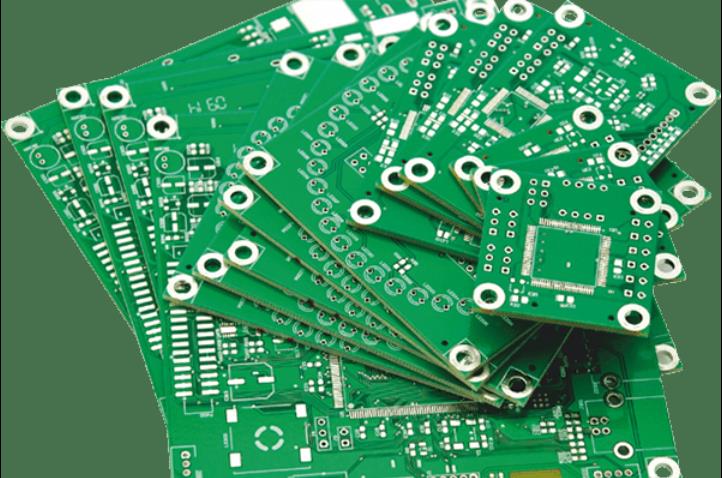The rapid development of science and technology has constantly promoted the rapid development of the electronic industry. PCB board wiring becomes more and more accurate. Most PCB manufacturers use dry film to complete graphics transmission, so the use of dry film is becoming more and more popular. However, many customers still encounter many misunderstandings when using dry film.
1. Single sided PCB board
The substrate is mainly composed of paper phenol copper laminate (paper phenol as the base, copper foil) and paper epoxy copper laminate. Most of them are used in radios, audio-visual equipment, heaters, refrigerators, washing machines and other household appliances, as well as commercial machines, such as printers, vending machines, circuit machines and electronic components. The advantage is low price.

2. Double sided PCB board
The substrate materials are mainly Glass Epoxy copper laminate, GlassComposite (glass composite) copper laminate and paper Epoxy copper laminate. Most of them are used in personal computers, electronic instruments, multi-function phones, automotive electronic machinery, electronic peripherals, electronic toys, etc. As for Glass benzene resin copper laminate, Glass polymer copper laminate is mainly used for communication machinery, satellite broadcasters and mobile communication machines due to their excellent high-frequency characteristics. Of course, the cost is also high.
3. Layer 3-4 PCB
The substrate is mainly glass epoxy or benzene resin. It is mainly used for personal computers, medical electronic equipment, measuring machines, semiconductor testing machines, CNC machine tools, electronic switches, communication machines, storage circuit boards, IC cards, etc. There are also glass composite copper plates as multilayer PCB materials, mainly focusing on their excellent processing characteristics.
4. 6-8 layer PCB
The substrate material is still mainly glass epoxy or glass benzene resin. Used for electronic switches, semiconductor testing machines, medium-sized personal computers EWS (Engineering Work Station), NC and other machines.
5. PCB boards with more than 10 layers
The substrate is mainly made of glass benzene resin or glass epoxy as the substrate material of multilayer PCB. The application of this kind of PCB is special, mainly because it has excellent high frequency characteristics and high temperature characteristics, most of which are mainframes, high-speed computers, communication machines, etc.
6. Other PCB board substrate materials
Other PCB substrate materials include aluminum substrate, iron substrate, etc. Circuits are formed on the base plate, and most of them are used for rotating machinery (small motors) and automobiles. In addition, there is a flexible PCB. The circuit is made of polymer, polyester and other main materials, which can be used as single-layer, double-layer and multilayer boards. The flexible circuit board is mainly used for moving parts such as cameras and OA machines, as well as the connection between the above-mentioned hard PCB board or the effective connection combination between the hard PCB boards and the soft PCB boards. As for the connection combination mode, its shape is diversified due to its high elasticity.
PCB board is divided into single panel, double panel and multilayer board. So, what knowledge do you need to master in the beginning of PCB wiring skills?
1. For the connection of more than 3 points, the line shall pass through the points in turn as short as possible.
2. Try not to place lines between pins, especially between and around integrated circuit pins.
3. Lines between different layers shall not be parallel as much as possible.
4. The wiring shall be straight line or 45 degree polyline as far as possible.
5. The grounding wire and power line shall be at least 10-15mil.
6. Try to connect the propagation of polylines and keep the lines as neat as possible.
7. Pay attention to the uniform discharge of components for installation, plug-in and welding operations. Text is arranged in the current character layer to avoid being obscured.
8. The structure shall be considered more for element emission. SMD elements with positive and negative electrodes shall be packaged and finally marked.
9. Wiring is usually 6 mil line width, 8 mil line spacing, and 12/20 mil pad.
10. Function block components shall be together as much as possible.
11. Green oil shall be used for vias.
12. It is better not to put pads or empty seats on the battery holder.
13. After wiring, carefully check whether each line is really connected (can be lit).
14. Oscillating circuit components shall be as close to IC as possible and away from vulnerable areas such as antenna.
15. More consideration shall be given to reinforcement and hollowing out of components to avoid too many radiation sources.
The above are some of the knowledge you need to master when learning PCB board wiring skills. Do you understand them all?